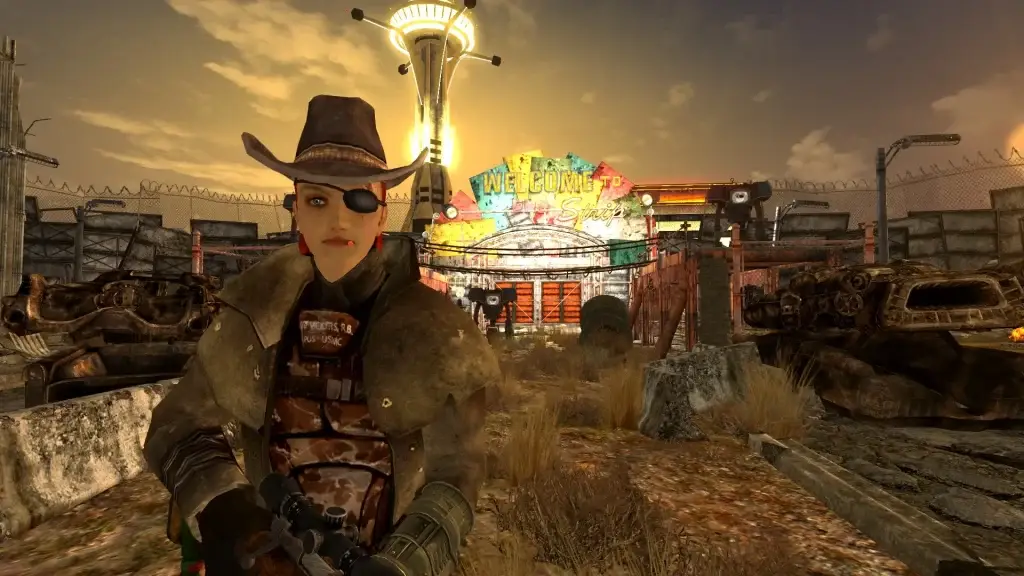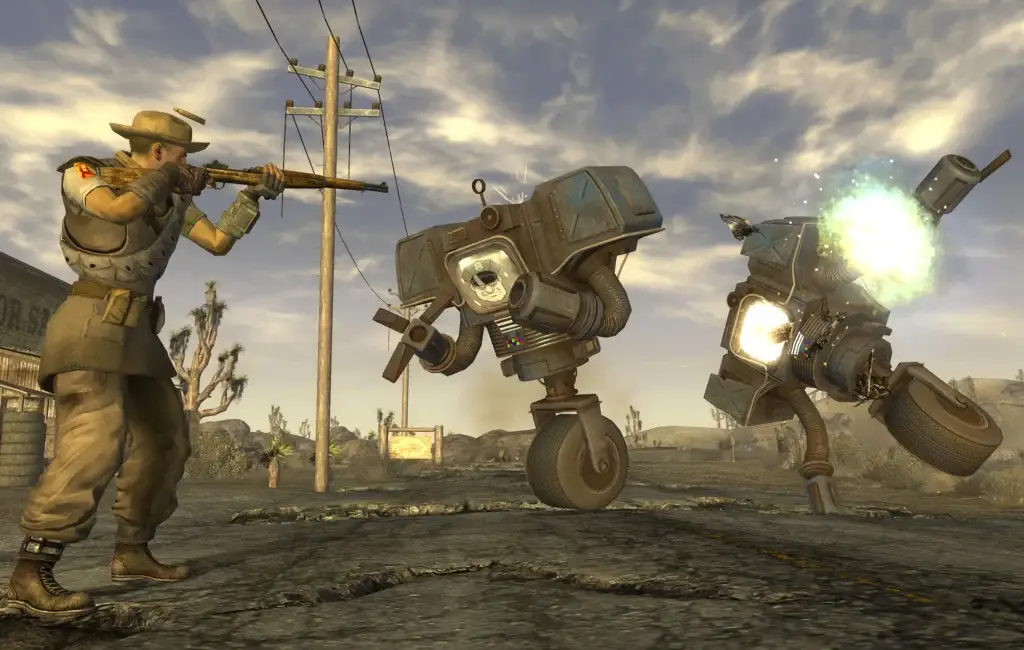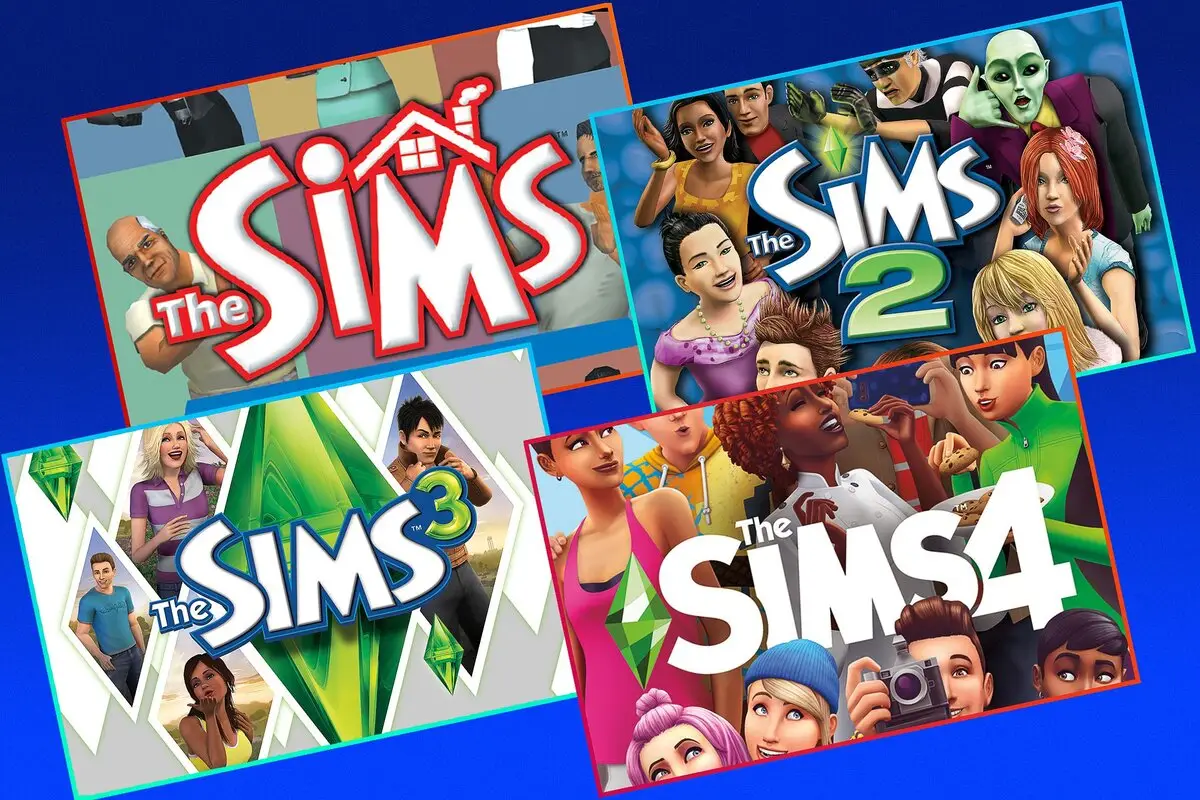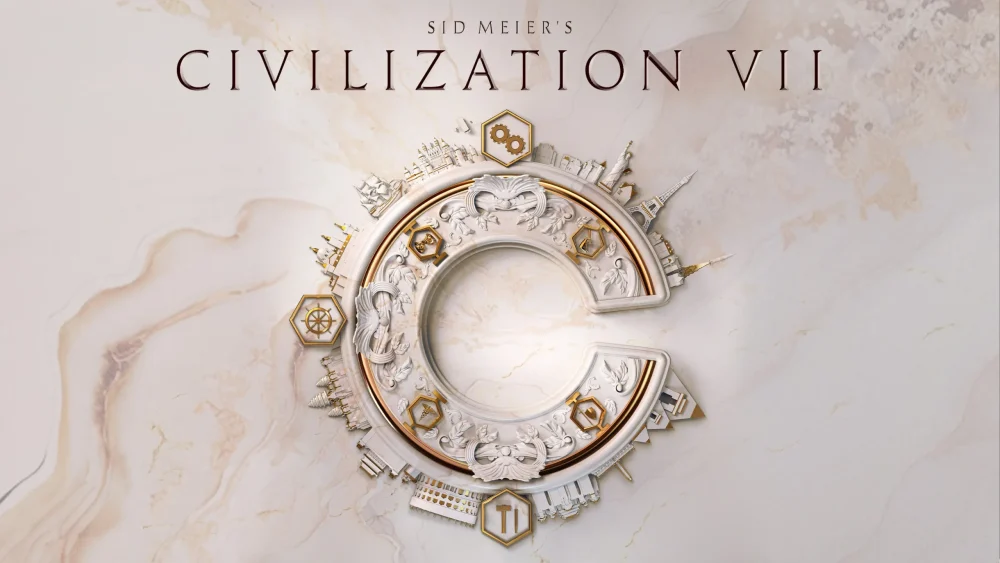Fallout New Vegas is a living work of art that was put into soul. Nothing conveys the atmosphere of the post-apocalypse so vividly and with such detail as this masterfully created world. Let’s dive into every detail and find out why Fallout New Vegas remains the best project in the series.
New Vegas: a game world that lives and breathes
The world of Fallout New Vegas is unique. Unlike others in the series, New Vegas breathes. Each faction here has its own goals, interests, and history that shape the worldview of players. Their confrontations become a real political drama, where you need to choose a side based on your own moral values.
Factions:
- New California Republic (NCR) – seeks to restore order and control in the post-apocalyptic world. The faction focuses on the values of the old world, such as democracy and law, but faces problems with corruption and lack of resources.
- Caesar’s Legion – A brutal dictatorship inspired by the Roman Empire. They seek total power and see their mission as establishing a new order through strict discipline and violence. Their ideology often clashes with the values of freedom and individualism.
- Brotherhood of Steel – A technocratic faction that seeks to preserve and control pre-war technology. The Brotherhood is isolated and rarely interferes with others unless it benefits their technological interests.
- House House – Led by Mr. House, who dreams of restoring New Vegas to its former glory. He has vast knowledge and resources that allow him to rule the city, but his methods are often harsh and uncompromising.
- Big Khans – A nomadic faction made up of biker descendants. They adhere to their own traditions and are involved in the drug trade. The Big Khans try to survive in a harsh environment, trusting no one but their own.
- Omerta – One of the gangs that controls the casinos of New Vegas. Their main goal is to strengthen their influence in the city and make money from gambling and illegal dealings. Their activities are hidden from the eyes of most residents.
- The White Glove is an elite society that runs the Ultra-Luxe Casino. At first glance, they appear sophisticated and civilized, but their dark secrets and cannibalistic tendencies make them extremely dangerous.
- The Boomers are a group of people who have isolated themselves at Nellis Air Force Base. They possess an arsenal of pre-war weapons and fire on anyone who approaches their territory. Despite their aggressiveness, they are willing to cooperate with those who prove their loyalty.
- The Kings are a faction based in Freeside that admire pre-apocalyptic culture, particularly the image of Elvis Presley. They protect the local population and strive to maintain order in Freeside, although their methods can be quite unconventional.
 The game characters are also alive – not cardboard cutouts, but real heroes with whom you can interact: they influence the development of the plot. Conversations with heroes like Mr. House or Benny give a feeling of participating in their stories, and not just going through another quest. These details are what make Fallout New Vegas so unforgettable.
The game characters are also alive – not cardboard cutouts, but real heroes with whom you can interact: they influence the development of the plot. Conversations with heroes like Mr. House or Benny give a feeling of participating in their stories, and not just going through another quest. These details are what make Fallout New Vegas so unforgettable.
Characters:
- Mr. House is a brilliant businessman and visionary who runs New Vegas. His dream is to restore the city and return it to its former glory. Harsh methods and enormous power make him one of the most interesting and controversial characters.
- Benny is a cunning and charismatic leader of the Omerta group, who betrays the Courier at the beginning of the game. His motivations hide deep personal ambitions, which makes him not just an enemy, but a complex and memorable character.
- Caesar is the head of Caesar’s Legion, organized in the style of the Roman Empire. He is charismatic and confident in his ideals, striving to bring order to the wasteland through strict discipline and obedience.
- Boone is a former New California Republic sniper who lost his wife. His tragic story and thirst for revenge make him one of the most emotionally charged companions.
- Veronica Santiello is a member of the Brotherhood of Steel who is searching for meaning in a world that no longer seems to need her faction. Veronica is charismatic and kind, with an internal conflict that greatly influences her actions.
- Reid Rex is a cyberdog who serves as a loyal companion to the player. His story can be uncovered by helping him regenerate damaged body parts, adding an emotional connection to this unusual character.
- Lily Bowen is a super mutant suffering from a split personality. Her story is full of sadness and lost memories, which creates a deep emotional contrast to her strength and appearance. Raul Tejada is a gooey, former mechanic who helps the player with his skills. Raul is a humorous character despite his sad past, and adds a lighter touch to the game’s otherwise dark atmosphere.
Details that make the world feel real
Fallout New Vegas creates the feeling of a living world thanks to attention to detail. The developers of the post-apocalyptic RPG from Obsidian Entertainment added a lot of unique dialogues and unexpected plot twists. Each task is not just an item on the list, but a whole story in which the user participates. Small missions, such as quests for the residents of the Goodsprings settlement, add depth and realism to the world, showing that even on the edge of civilization, ordinary people remain with their own worries and dreams.
Why Fallout New Vegas is better: stories that touch the heart
Fallout New Vegas is known for its non-linear plot, which provides a huge freedom of choice. Joining one of the factions or deciding the fate of the characters affects the ending. This freedom is one of the reasons why the project is so highly valued in the gaming community.
The story follows a courier who miraculously survives a headshot and embarks on an epic journey to exact revenge on his abuser, Benny. As the story unfolds, the player faces ethical dilemmas, chooses sides in conflicts, and faces the consequences of their actions. It is the ability to influence the ending and determine the fate of the world that makes the story so gripping.
Fallout New Vegas Gameplay: Game Mechanics in Action
Relationships with factions and the karma system play an important role in the gameplay of Fallout New Vegas. Every action the player takes affects their reputation with different factions. For example, helping the New California Republic strengthens its position, but it pushes away others, such as Caesar’s Legion.
The skill system also provides a huge number of possibilities. There are skills such as hacking, bartering, and medicine, which can be improved and used to solve quests in different ways. In some situations, the player can use diplomatic skills instead of violence, which makes the gameplay more flexible and interesting:
- Use hacking to penetrate closed areas and obtain secret information.
- Increase persuasion skills to avoid unnecessary battles and negotiate with opponents.
- Develop medicine to help allies and improve survivability in the wasteland.
- Fallout New Vegas compared to Fallout 4: what makes New Vegas special
When we compare both projects, it becomes obvious that the atmosphere of New Vegas is much more intense and multi-layered. If Fallout 4 emphasizes action and crafting, then Fallout New Vegas emphasizes developing the plot and characters. Here, the user is immersed in a world where every decision matters, and this makes you feel the atmosphere of the post-apocalyptic world more deeply.
Differences in the approach to character development
In Fallout New Vegas, the hero development system provides more flexibility and opportunities for individualization. You can choose which skills to focus on, and this significantly affects the passage. Skills such as persuasion, hacking, and bartering can significantly change the course of missions, allowing the player to use different approaches.
This flexible approach allows you to build your own strategy depending on your preferred style. This adds depth and makes you want to replay the story over and over again, trying new options for character development.
Conclusion
 Fallout New Vegas remains the best game in the series due to its deep character development, non-linear plot, and a sense of complete freedom. This world is a living space where every action matters. The ability to choose, change, and influence the destinies and environment around you creates a unique experience that is difficult to find in other projects.
Fallout New Vegas remains the best game in the series due to its deep character development, non-linear plot, and a sense of complete freedom. This world is a living space where every action matters. The ability to choose, change, and influence the destinies and environment around you creates a unique experience that is difficult to find in other projects.
 en
en  de
de  ar
ar  es
es  nl
nl  hi
hi  fr
fr  it
it  pt
pt  el
el 



